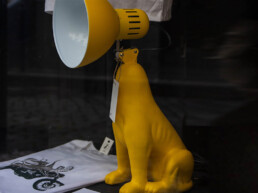Hybrid working: the best or the worst thing ever for healthcare advertising?
Well the future’s here and it’s hybrid. Even by late 2022, midweek commuting on TFL had barely staggered back to 70% of pre-pandemic levels. Across our industry – and almost all ‘white-collar’ work – the hybrid model is the only show in town. To the chagrin of some bosses, there seems no sign of a return to the ‘bums on seats’ model of old. It felt like a good time to take stock and work out if working ‘out’ is, er, working out.
The good old ways
Agency life before COVID was, on reflection, insane. Five-day commutes eating all that time away. Half, often whole, days spent chuntering to and from the clients’ office, often for an hour’s meeting. This creative (and two others) used to fly to Switzerland twice a month for one-hour client meetings – can you imagine clients paying for that nowadays (or us doing it)? COVID made most agencies walk the plank into hybrid life. Others (modest humble brag: Salt) had been doing it for a while already. Agency life sure has changed. But has it changed for the better?
Hybrid life has been a boon
Home life has won out over office life, at least at each end of the working week. Work that flexes around childcare, breaks when you choose. Time spent doing productive stuff, not smushed on the Central Line. Even if HQ is inside the M25, you don’t have to be. Hell, one member of Salt has spent Winter in Kenya since 2020, and still does her job 110%.
Most agencies are in ‘full flex’, some with mandatory office days but (I suspect, due to fear they’ll lose staff) most without them. Lots use carrots (booze mainly) to lure people in, rather than sticks. FOMO helps a great deal too. Teams banter has replaced office banter; banter you can silence at the flick of a switch. Agencies still have their personalities – and you don’t have to be stuck next to said ‘personality’ for 8 hours straight. All hail the hybrid agency!
Hybrid life has been a bust
But home life and office life, for many, are now one continuous blur – with people being (or just feeling) pestered to reply (and sometimes work) at all hours, not just ones that suit them. Meetings queue up like buses; filled with eye contact or, worse, camera-off zombies. A never-ending revolving door of clients and screen time.
Working in your spare room is dandy, provided you’ve got one. The thought of spending the majority of my working week, nay life, living in some of the dodgy flatshares of my youth (and paying for the heating, when it worked) doesn’t bear thinking about.
If you’re quite old (me: tick) and experienced (me: jury’s out), homeworking can be blessed respite from noise and interference. But if you’re young – or just new – that ‘din’ was the buzz of agency life, quite a lot of it useful. You picked stuff up by tagging along or, frankly, listening in to your peers. You can’t tiptoe into a Teams call.
Osmotically soaking up skills works in an open office, it doesn’t if you’re 5 miles from it. And I wonder if the bonds I’ve made with people ‘in the trenches’ over the years would be as strong (or frequent) if most of my agency life had been conducted in 2D rather than 3D. Maybe that’s why, in a recent survey of 500 employees, wellbeing around hybrid working was far lower in the under 30s than for the over 40s.
Hybrid life is, well, hybrid
Like it or loathe it, hybrid working’s not going anywhere. And (for now at least) the office very much is still there if you want it. I, for one, miss some of the camaraderie of the office. I also get next to nothing done whenever I’m in one (the din!). I guess the answer, a bit like it always was, is just picking the working style (or agency) that works best for you – and making sure if you’re lucky enough to have the skills to pay the bills, you pass them on to others (so they can pay theirs).
By Dan Cuthill, Copy Lead
